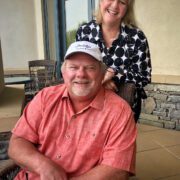The University of Florida might be known nationally for the great athletes it produced like Emmitt Smith, Joakim Noah and Steve Spurrier.
But beyond the flashy Southeastern Conference sports achievements, the Gainesville-based school is a medical research hub. And, as the race for a Coronavirus vaccine heats up, office space for life sciences is in demand.
“We’re at a small market with a major university that does a lot of research,” Nick Banks, principal, managing director and global leader of Avison Young’s retail affinity group. “Life sciences is a big part of our local economy, and there is a lot of demand right now from these life sciences companies.”
Banks expects interest in life sciences space to continue to grow since a lot of it is related to vaccine development or vaccine production.
“For the foreseeable future these life sciences companies are going to have bigger and bigger needs,” he says.
Banks says research dollars generate about 300 patents a year in the Gainesville area, and many of those are in life sciences. “From an economic development standpoint, it’s just a big part of our local economy, and it has generated a ton of jobs,” Banks says.
While vaccine development is driving demand in the market, it’s not the only catalyst for demand in the market. Banks says companies working on nerve regeneration and human tissue implants are also experiencing growth.
“For as small of a market as we have, there is a large cluster of life sciences companies and activity here related to the university and technologies that have rolled out of the university,” Banks says.
While demand for life sciences space is growing in Gainesville, Banks supply is limited. You can’t just turn any old medical office into a lab.
“The infrastructure that is required in these buildings is completely different from a typical medical office,” Banks says. “Medical offices, where you go to your doctor or your dentist, tend to cluster together. But in reality, it’s not that different from a typical office building where you might find an accountant or an attorney.”
Life sciences buildings, on the other hand, are more similar to manufacturing facilities, according to Banks.
“The air ventilation, the infrastructure and everything that goes into these buildings is completely different,” Banks says. “It really is an entirely different category than anything else in commercial real estate.”
If an investor wanted to repurpose a medical office or any other office into a life sciences space, it probably wouldn’t be cost prohibitive. “It is generally more expensive to repurpose a building for a lab use than it is to just build it from scratch,” Banks says.
Banks knows this from experience as one client sought a 40,000-plus square foot life sciences building.
“We started out looking at buildings that could be retrofitted and quickly came to the conclusion that this needs to be a build to suit specific for the tenants’ needs,” Banks says. “That ended up being a much more economical solution.”
Original article written by Les Shaver with GlobeSt.com


